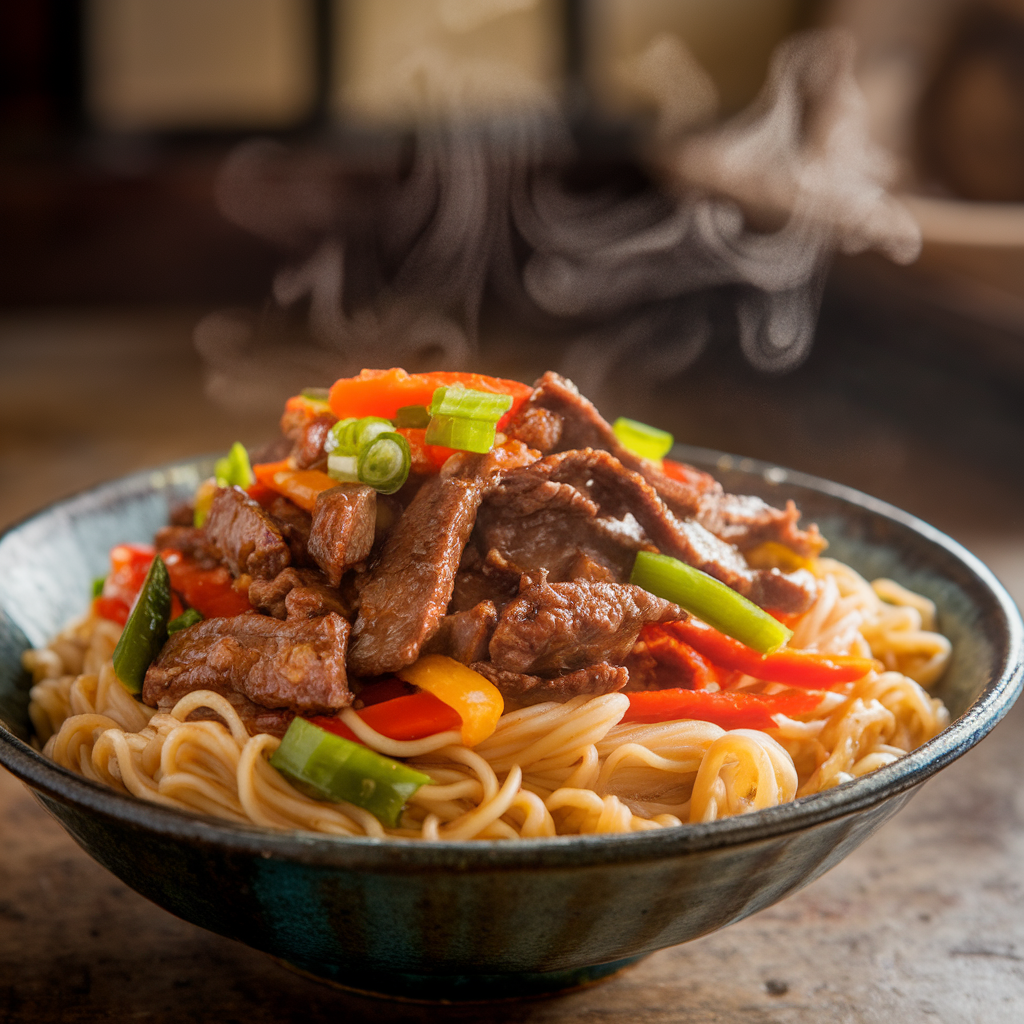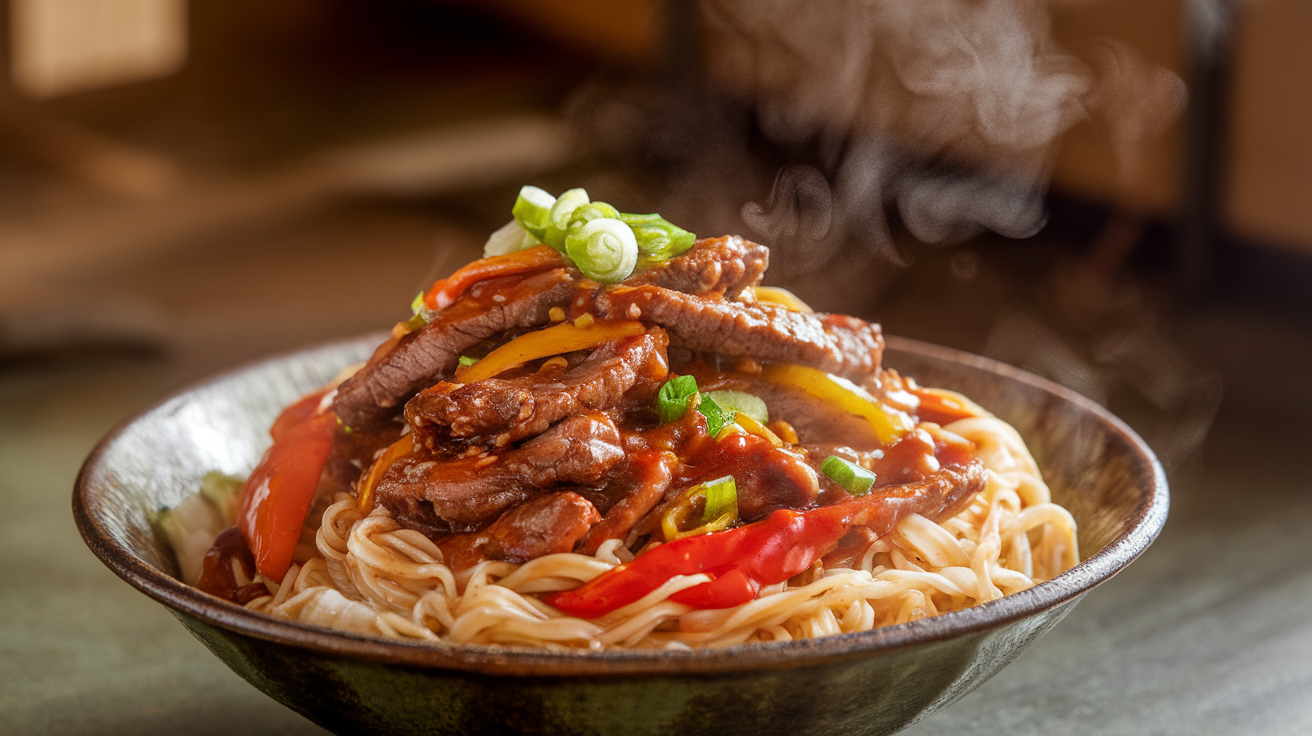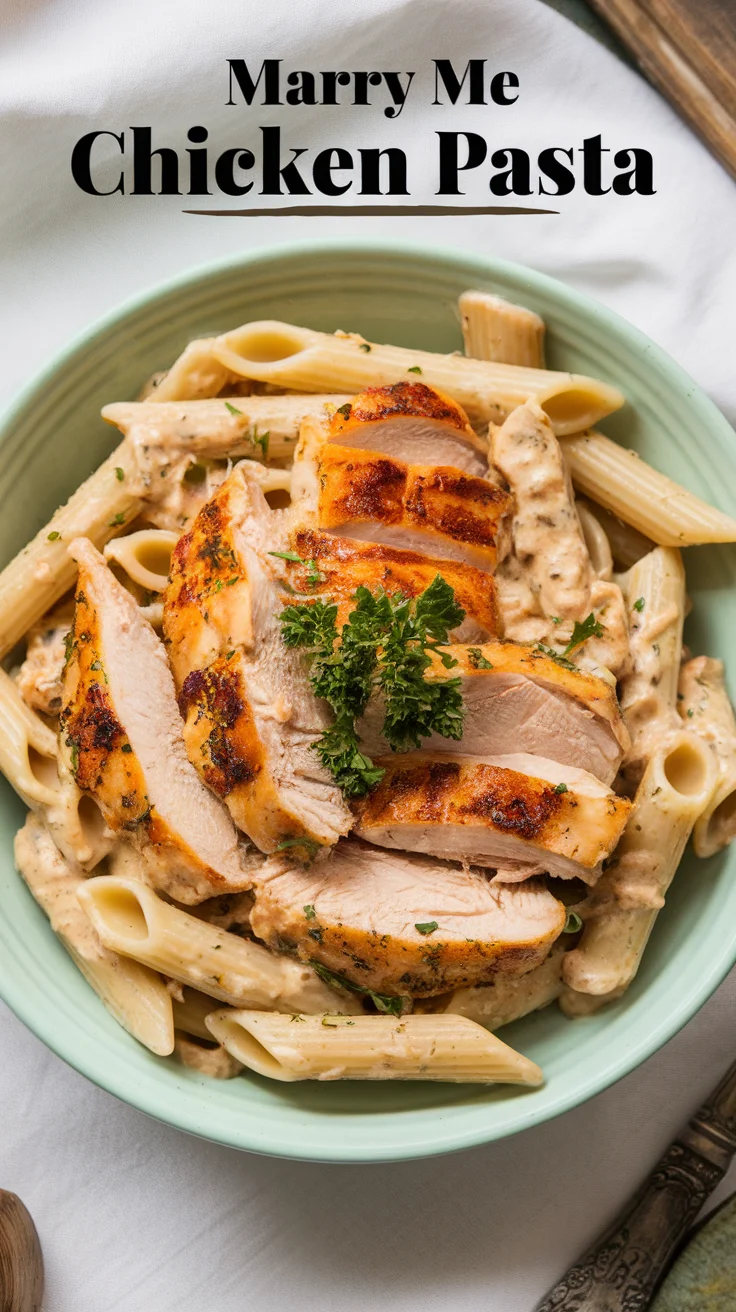In the search for healthy dinner recipes using ground beef that deliver on taste, nutrition, and ease, High Protein Mongolian Noodles stand out as a winning option. Combining the rich, savory flavors of traditional Mongolian beef with hearty noodles, this recipe provides a fulfilling, balanced meal with plenty of protein to fuel your body and satisfy your palate.
Whether you’re looking for protein meat recipes to support muscle building or weight management, or simply craving a comforting, flavorful dish, these noodles tick every box. In this detailed guide, we’ll explore everything about this dish—from ingredient choices, step-by-step cooking instructions, and nutritional benefits, to creative variations and meal prep tips.
Why You’ll Love High Protein Mongolian Noodles
Mongolian beef is a classic dish loved for its bold flavors—sweet, salty, and savory—with tender beef strips glazed in a rich soy-based sauce. By adapting it into a noodle bowl with lean ground beef and whole grain noodles, you get:
- High protein content: Lean ground beef delivers essential amino acids for muscle repair and satiety.
- Balanced nutrition: Whole grain or legume-based noodles provide complex carbohydrates and fiber for sustained energy.
- Quick preparation: With just a few key ingredients and minimal prep, it’s perfect for weeknight dinners or meal prep.
- Flavor depth: Fresh garlic and ginger, plus a well-balanced Mongolian-style sauce, create layers of taste without excess calories.
- Personalizable: Easy to add vegetables for extra fiber and micronutrients.
- Ideal for health-conscious diets: Fits into clean eating, high protein, and balanced macros meal plans.
- Fulfilling: The combination of protein, fat, and fiber keeps you full and energized.
This recipe is a standout among healthy dinner recipes meat, particularly those using ground beef, because it’s simultaneously simple, wholesome, and delicious.
Ingredient Breakdown and Their Roles in the Dish
Let’s look closer at the star ingredients and why each is important for flavor, texture, and nutrition.
De Carne De Res Molida
Choosing ground beef with at least 90% lean content minimizes saturated fat while delivering rich flavor and plenty of protein. Protein is crucial for muscle maintenance, hormone production, and overall health, making this recipe perfect for meals with lots of protein.
Whole Wheat or High-Protein Noodles
Whole wheat noodles add fiber, B vitamins, and slow-release carbohydrates. Alternatively, legume-based noodles (like chickpea or lentil pasta) can increase protein and fiber further, boosting the dish’s nutritional profile. Noodles provide the energy base to complement the beef’s protein.
Soy Sauce (Low Sodium)
Soy sauce is the salty, umami-rich backbone of the Mongolian sauce. Using low sodium versions helps control salt intake while preserving that characteristic savory depth.
El ajo y el Jengibre
Fresh garlic and ginger add aromatic complexity and health benefits, including anti-inflammatory and immune-supporting properties.
Brown Sugar or Coconut Sugar
A small amount of sugar balances the salty soy sauce with mild sweetness, creating the signature Mongolian flavor profile. Coconut sugar offers a lower glycemic index option.
Green Onions (Scallions)
Green onions brighten the dish with fresh, sharp notes and provide vitamins A and C.
Sesame Oil (Optional)
Just a drizzle of toasted sesame oil adds a nutty fragrance and rich depth.
Optional Vegetables
Adding vegetables like bell peppers, snap peas, broccoli, or carrots enhances fiber, antioxidants, and color, rounding out this healthy savory dinner recipe.

Detailed Step-by-Step Cooking Instructions
Step 1: Cook the Noodles
Cook your noodles according to package instructions until al dente. Use whole wheat or legume-based noodles for added protein and fiber. Drain and rinse under cold water to stop cooking and set aside.
Step 2: Brown the Ground Beef
Heat a large skillet or wok over medium-high heat. Add a teaspoon of olive oil, then add the lean ground beef. Break it apart with a spatula and cook, stirring occasionally, until fully browned and cooked through (about 7-8 minutes). Drain excess fat if necessary.
Step 3: Add Aromatics
Stir in 2-3 cloves of minced garlic and 1 tablespoon of freshly grated ginger. Sauté for 1-2 minutes until fragrant but not browned.
Step 4: Prepare the Sauce
In a small bowl, combine ½ cup soy sauce, 2 tablespoons brown sugar, and ¼ cup water or low-sodium beef broth. Stir until the sugar dissolves.
Step 5: Combine Beef and Sauce
Pour the sauce into the skillet with the beef and aromatics. Reduce heat to medium and simmer for 4-5 minutes until the sauce thickens slightly and coats the beef.
Step 6: Add Noodles and Toss
Add the cooked noodles to the skillet. Toss well to combine so the noodles absorb the sauce and mix evenly with the beef.
Step 7: Add Vegetables (Optional)
If using vegetables, toss in thinly sliced bell peppers, snap peas, or steamed broccoli now. Cook for 2-3 minutes to heat through but retain crunch.
Step 8: Garnish and Finish
Turn off the heat and drizzle 1 teaspoon toasted sesame oil over the top for aroma. Garnish with sliced green onions and toasted sesame seeds if desired.

Nutritional Insights: Why This Recipe Is a Filling High Protein Meal
Per serving, this dish offers a robust dose of protein (approximately 30-35 grams depending on noodle choice), moderate carbohydrates, and controlled fat content when made with lean beef and minimal oils. This balance helps:
- Build and repair muscle tissue
- Maintain blood sugar stability
- Provide lasting satiety to curb overeating
- Support metabolic health with essential micronutrients
Incorporating fiber-rich noodles and vegetables enhances digestive health and nutrient absorption, making this more than just a tasty dish—it’s a nutrient-packed meal.
How to Customize for Your Diet and Preferences
Hacer Picante
Add chili flakes or fresh sliced chilies while cooking for a spicy kick.
Vegetarian or Vegan Option
Substitute ground beef with crumbled tofu, tempeh, or textured vegetable protein (TVP). Use tamari for soy sauce if gluten-free.
Low-Carb Adaptation
Replace noodles with spiralized zucchini or shirataki noodles to lower carbs while keeping volume.
Increase Veggie Content
Double the vegetables for a colorful, nutrient-dense plate.
La Preparación De Comidas Amable
Prepare in bulk and store in airtight containers for up to 4 days. Reheat with a splash of water or broth to revive noodles.
Tips for Cooking the Best Mongolian Noodles
- Use fresh garlic and ginger for the brightest flavors.
- Do not overcook noodles; al dente texture prevents mushiness after mixing.
- Brown beef well to develop flavor via the Maillard reaction.
- Simmer the sauce long enough to thicken and coat ingredients.
- Toss noodles in the sauce and beef thoroughly for even flavor distribution.
Quick 4 Ingredients Recipes Version
For a fast version fitting your 4 ingredients recipes criteria:
- Lean ground beef
- Soy sauce
- Brown sugar
- Fideos
Simply brown beef, stir in sauce, and toss with noodles. Add garlic powder or ginger powder if fresh is unavailable. This minimalistic approach still delivers a satisfying, protein-packed dinner.
Why This Dish is a Must in Healthy Dinner Recipes Using Ground Beef
Ground beef is versatile and nutrient-rich. This recipe shows how to use it healthfully and deliciously in a classic dish. It’s a perfect example of healthy dinner recipes beef ground that are accessible, economical, and crowd-pleasing.

Video Recipes Healthy: Seeing is Believing
Visual learners love video recipes healthy because they demonstrate:
- Proper beef browning technique.
- The aroma and texture of the thickened Mongolian sauce.
- How to perfectly toss noodles for maximum flavor.
- Tips on chopping garlic and ginger.
- Creative plating and garnish ideas.
Online cooking platforms and YouTube offer many Mongolian beef videos you can adapt to this recipe.
Preguntas Frecuentes
Q: Can I freeze leftovers?
A: Yes, freeze in airtight containers up to 3 months. Thaw overnight and reheat gently on the stove.
Q: What noodle types work best?
A: Whole wheat, soba, or legume-based noodles add nutrition; traditional egg noodles offer classic texture.
Q: Can I add other meats?
A: Ground turkey or chicken work well but have milder flavor; adjust seasoning accordingly.
Shopping List for High Protein Mongolian Noodles
- Lean ground beef (1 lb)
- Whole wheat or legume noodles (8 oz)
- Low sodium soy sauce (½ cup)
- Brown sugar or coconut sugar (2 tbsp)
- Fresh garlic (2 cloves)
- Fresh ginger (1 inch)
- Green onions (1 bunch)
- Olive oil or sesame oil (optional)
- Optional vegetables: bell peppers, snap peas, broccoli
La Preparación de comidas y Consejos de Almacenamiento
- Cook noodles and beef separately for easier mixing later.
- Store noodles and beef sauce in separate containers to maintain texture.
- Add fresh garnishes at serving time.
- Portion meals for quick grab-and-go lunches or dinners.
Final Thoughts: Savoring Filling High Protein Meals Every Day
High Protein Mongolian Noodles combine convenience, nutrition, and flavor into a satisfying dish suitable for anyone seeking healthy savory dinner recipes featuring ground beef. It offers a winning balance of protein, fiber, and taste that fits fitness, family, and busy lifestyles alike.
This dish belongs in your rotation of protein meat recipes y healthy dinner recipes meat, perfect for those who want meals with lots of protein and quick preparation. Its adaptability means you can always tweak it to suit dietary needs or flavor preferences.
Try this recipe tonight to enjoy a wholesome, restaurant-quality meal at home!


